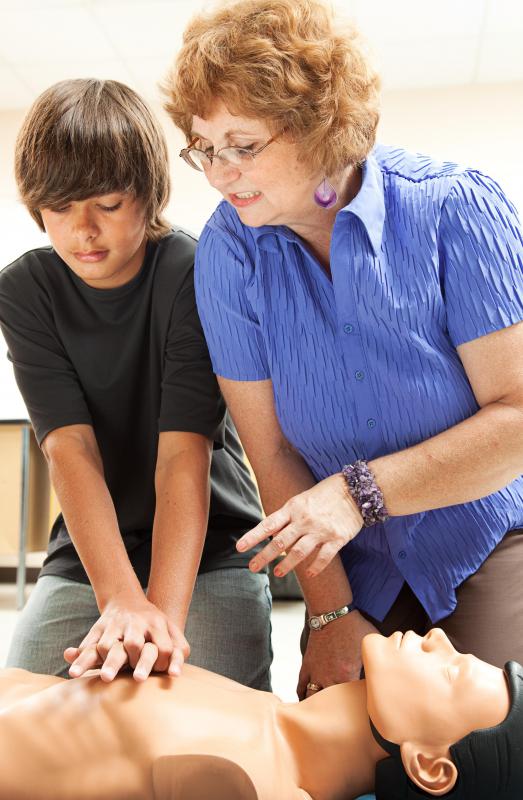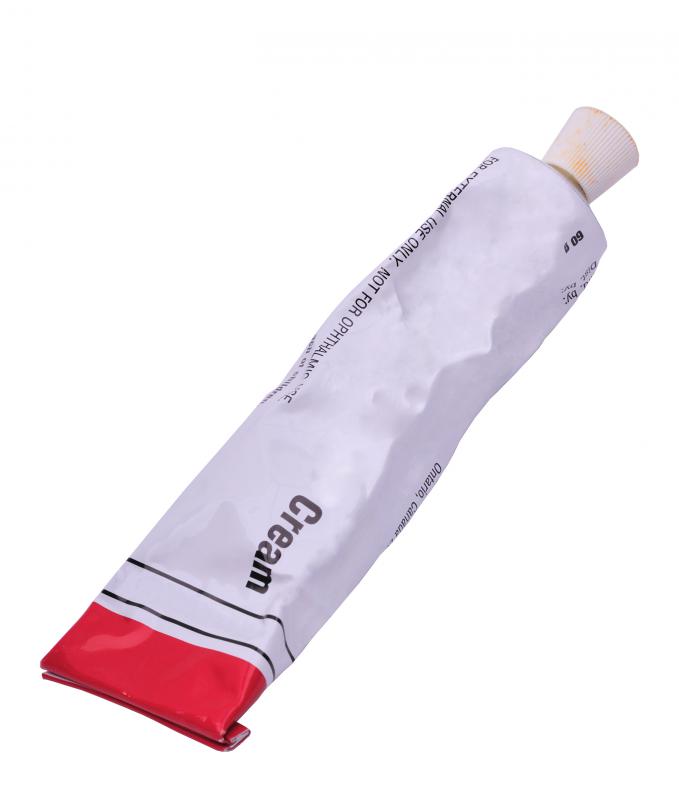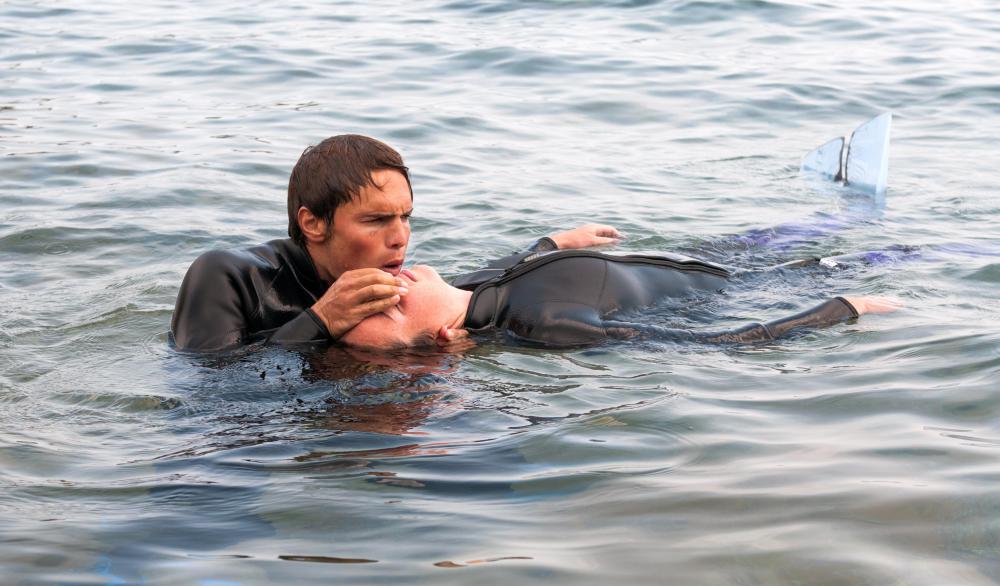At TheHealthBoard, we're committed to delivering accurate, trustworthy information. Our expert-authored content is rigorously fact-checked and sourced from credible authorities. Discover how we uphold the highest standards in providing you with reliable knowledge.
What is First Aid?
First aid refers to the immediate, direct treatment of an injured person. Anyone with a basic understanding of medical treatment can administer aid at the first signs of trouble. Simple procedures may include stopping blood loss by applying pressure, dressing a wound, treating a burn with ointment, or setting a bone with a splint. Some types, such as performing cardiopulmonary resuscitation (CPR), require an individual to receive specialized training from an accredited program.
Many minor injuries can be handled with simple, immediate medical attention. A small cut, burn, or blister, for instance, can be attended to by thoroughly cleaning the injury, applying a topical antibiotic cream, and covering it with a breathable bandage or wrap. Treating bruises, muscle strains, swelling, and animal bites usually involves icing and compressing the injuries, as well as taking over-the-counter anti-inflammatory or pain medication.

Some injuries require medical services beyond the average person's abilities. An person who is choking or drowning, for example, may depend on a trained professional to administer the Heimlich maneuver or CPR. Strokes, seizures, concussions, and broken bones create special challenges for immediate medical care providers, as they are usually required to keep victims calm and conscious while temporarily relieving symptoms.

Individuals in most countries can get first aid training through courses offered by community health organizations and hospitals. Training may last anywhere from a few hours to three or four days, depending on the scope of a program. Individuals in training usually learn how to recognize signs of choking, concussions, and blood loss, and practice the means of treating such ailments. People who learn how to perform CPR and other lifesaving tasks are often awarded with special certifications.

Most supermarkets, retail pharmacies, online retailers, and specialty outdoors stores sell first aid kits, which prepare individuals for common injuries. Kits may include bandages, dressings, antiseptic sprays, painkillers, gloves, scissors, and sterile syringes among other items. Many people choose to keep these kits in their homes and cars to be prepared for emergencies. Hikers, sportsmen, and adventure seekers often carry emergency kits in case an accident occurs in an isolated area.

Successful first aid procedures can provide relief from pain and uncomfortable symptoms and prevent further damage from infection. When treatment is administered quickly, many injuries are able to heal completely without a visit to a medical professional or emergency room. Urgent care can even mean the difference between life and death in situations where professional help is unavailable or slow to arrive.
AS FEATURED ON:
AS FEATURED ON:

















Discussion Comments
@Ivan83 – I would definitely keep an antihistamine in my first aid kit. Popping a few of these after a bee sting could prevent a bad allergic reaction. Even if you only get mild swelling after an insect sting, an antihistamine can reduce the severity of it.
Bandages are also essential. If you get cut near a vein and the bleeding just won't seem to cease, you need to have a bandage on hand.
I would also include a small bottle of alcohol to clean wounds with. It burns like crazy, but it can prevent an infection later. Antibiotic cream is a good topical ointment to apply after you clean the wound.
In my experience, most first aid kits are overpriced and filled with a lot of things you will never use. I am wanting to put together my own kit, but I was hoping to get some advice from you guys.
What do you think the most important first aid supplies are? If you were putting together your own kit, what would you absolutely have to have in there? Plus, how much of each item would you include?
I always keep a first aid kit in the trunk of my car and it has come in handy more times than I can count. You never know when you are going to need a band-aid or some aspirin or maybe even something more intense. I made a one time investment of about $100 to get the kit but it has paid for itself a dozen times over.
It's a good idea to have at least one first aid bag in your home. They aren't very expensive, and they come in very handy for minor injuries.
I know it's easier to assume we won't need to use first aid, and hopefully we won't for something major. But first aid can be something as small as washing a cut and applying a bandage.
It's a good idea to make sure any babysitters you use have CPR and first aid certification. I try not to think of the things that could happen to my children when I'm not there, but it makes me feel a lot better to know that I've left them with someone who is well equipped to handle an emergency.
Especially since my oldest child is very accident prone!
I think it's very important to be prepared to administer first aid, even on a small scale. That's why I have a lot of fist aid supplies. I have a kit in my car, one in the diaper bag, one in the bike trailer, and the most comprehensive one is in the house.
When you list them all like that, it looks like it may be a bit of an overkill, but I have four young children, and you never know where you'll be when an accident strikes. I want to be ready, even if it's only for a scraped knee.
Post your comments